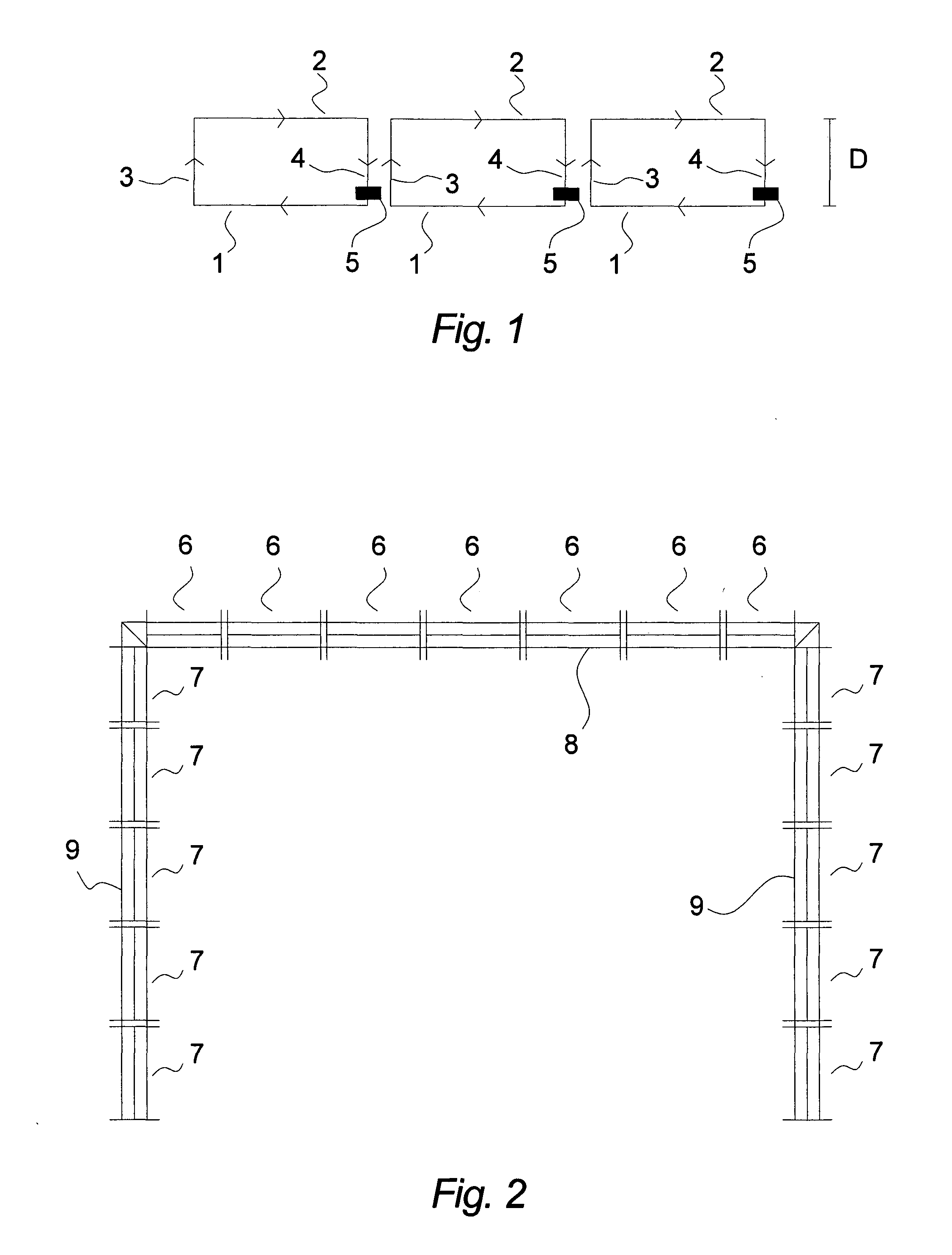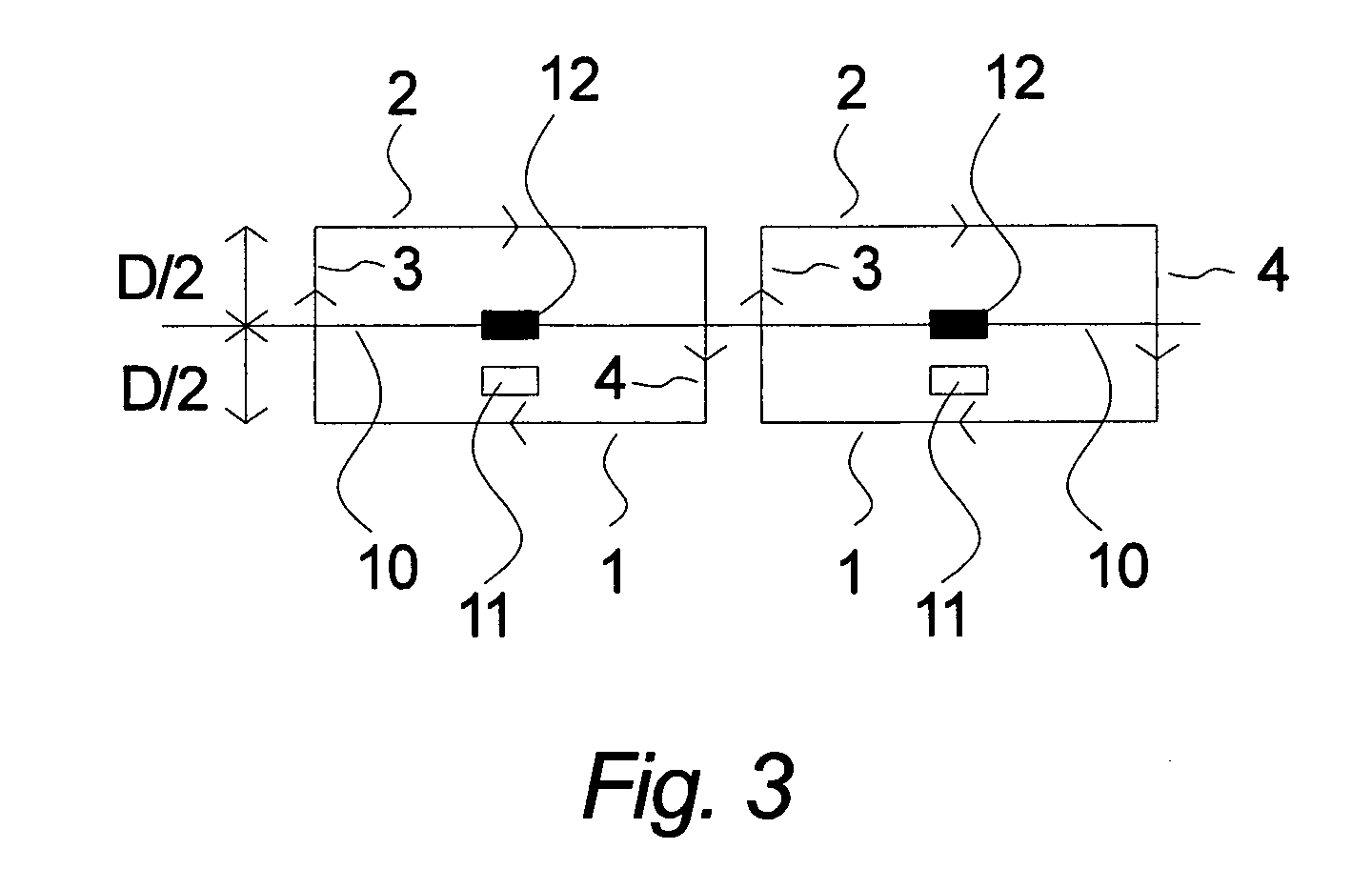Goal detector for detection of an object passing a goal plane
a technology of goal plane and detector, which is applied in the field of goal detector for the detection of objects passing a goal plane, can solve the problems of high update rate, difficult to determine correctly, and the spatial and temporal resolution of video cameras is often not sufficient to provide the necessary information, etc., and achieves the reduction of the size and number of coils, the effect of high field intensity
- Summary
- Abstract
- Description
- Claims
- Application Information
AI Technical Summary
Benefits of technology
Problems solved by technology
Method used
Image
Examples
Embodiment Construction
[0058]In FIG. 1, three sections of the cross bar of a football goal are shown schematically as seen from above. Each section comprises a conductor 1 in a first plane and a parallel conductor 2 in a second plane and two intermediate conductors 3, 4 connecting the other conductors 1, 2 to form a circuit wherein a current may run as indicated by the arrowheads. Each section has a separate control unit 5 for feeding current into the circuit of the section and possibly obtain data relating to objects in which a power is inducted by the section. The distance D between the parallel conductors 1, 2 in the horizontal direction normal to the goal plane is preferably chosen to be about the diameter of a standard football according to the regulations set by FIFA, more generally speaking from 15 to 50 centimetres. In a specific embodiment, the parallel conductors 1, 2 in the same plane of adjacent sections may be electrically connected, so that the front conductor 1 of one section is connected t...
PUM
 Login to View More
Login to View More Abstract
Description
Claims
Application Information
 Login to View More
Login to View More - R&D
- Intellectual Property
- Life Sciences
- Materials
- Tech Scout
- Unparalleled Data Quality
- Higher Quality Content
- 60% Fewer Hallucinations
Browse by: Latest US Patents, China's latest patents, Technical Efficacy Thesaurus, Application Domain, Technology Topic, Popular Technical Reports.
© 2025 PatSnap. All rights reserved.Legal|Privacy policy|Modern Slavery Act Transparency Statement|Sitemap|About US| Contact US: help@patsnap.com



